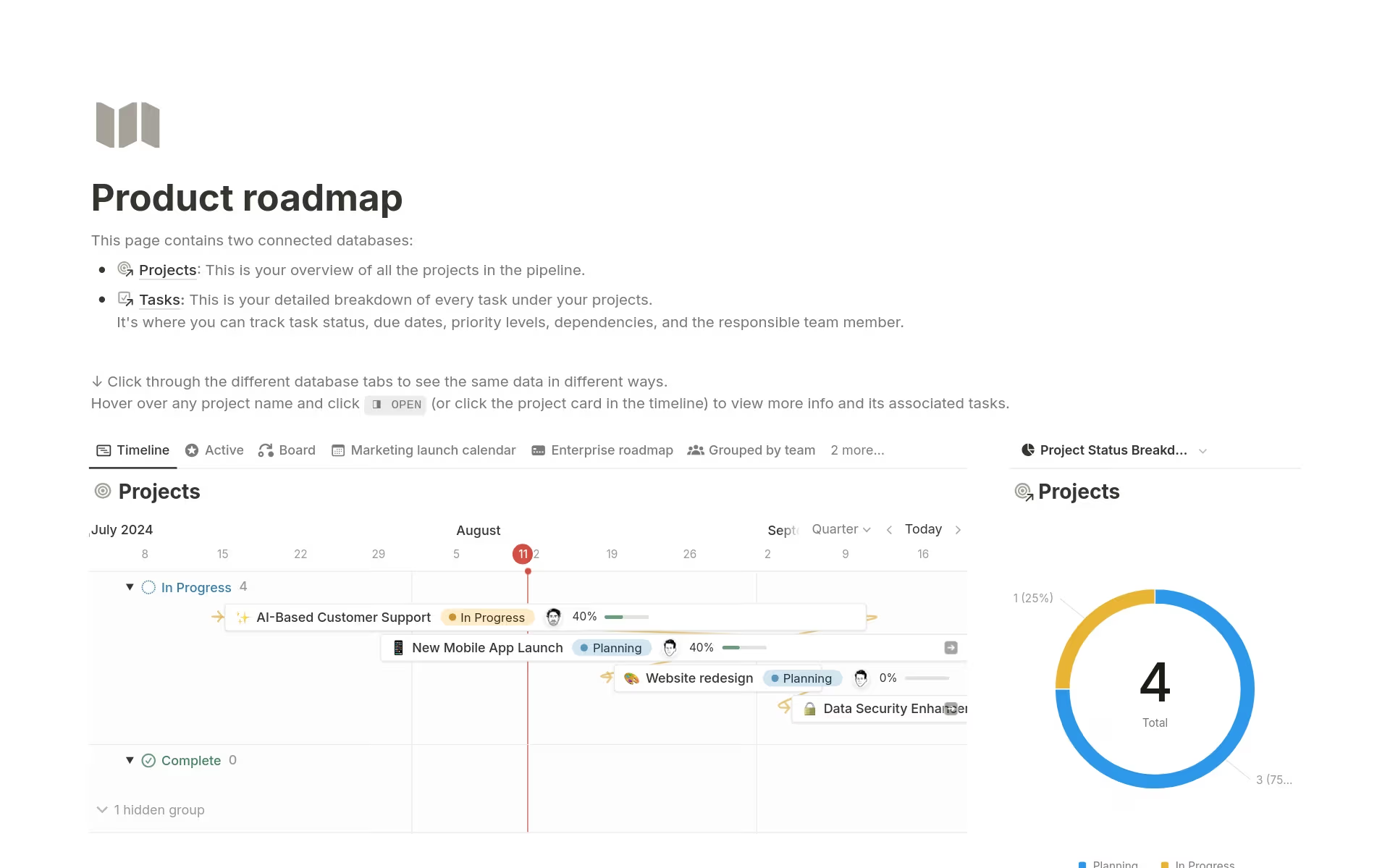Having a Product Strategy Map is crucial for aligning your product vision with actionable steps and ensuring that every aspect of product development is moving towards your business goals. It helps in prioritizing features, tracking progress, and making informed decisions. A Product Strategy Map template in Notion can streamline this process by providing a structured framework that can be customized to fit your specific product strategy needs.
Before you get started in creating your own Product Strategy Map, check out these Product Strategy Map Notion templates below to help make it easier.
What Should Product Strategy Map Templates Include?
Choosing the right Product Strategy Map Template in Notion can streamline your product planning process and ensure all critical elements are covered. Here are key components to look for:
Objective Clarity: The template should clearly define the main objectives of your product strategy, helping to keep your team aligned and focused.
Market Analysis: It should include sections for market analysis to understand the competitive landscape and target audience insights.
Key Metrics: Ensure there are predefined metrics to track progress towards your strategic goals, which can guide decision-making and adjustments.
Timeline and Milestones: A good template will outline the timeline and key milestones, providing a clear roadmap for your strategy implementation.
Selecting a template with these components will help you effectively organize and execute your product strategy, making complex processes manageable and transparent.
What Should Product Strategy Map Templates Avoid?
Choosing the right Product Strategy Map template in Notion can streamline your product planning process. However, it's important to be aware of certain elements that can hinder rather than help. Here are three key components to steer clear of:
Overly Complex Structures: Templates with too many layers or confusing layouts can complicate the strategy process, making it hard to maintain a clear focus.
Fixed Time Frames: Avoid templates that rigidly define time frames for goals. Flexibility in planning allows for adjustments based on real-time progress and insights.
Generic Content: Steer clear of templates filled with generic, non-customizable content. They should serve as a guide, not dictate your strategy specifics.
Remember, the best templates are those that provide clarity and flexibility, helping you to adapt swiftly to changes in the market or internal shifts within your company.













